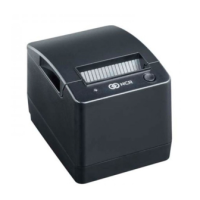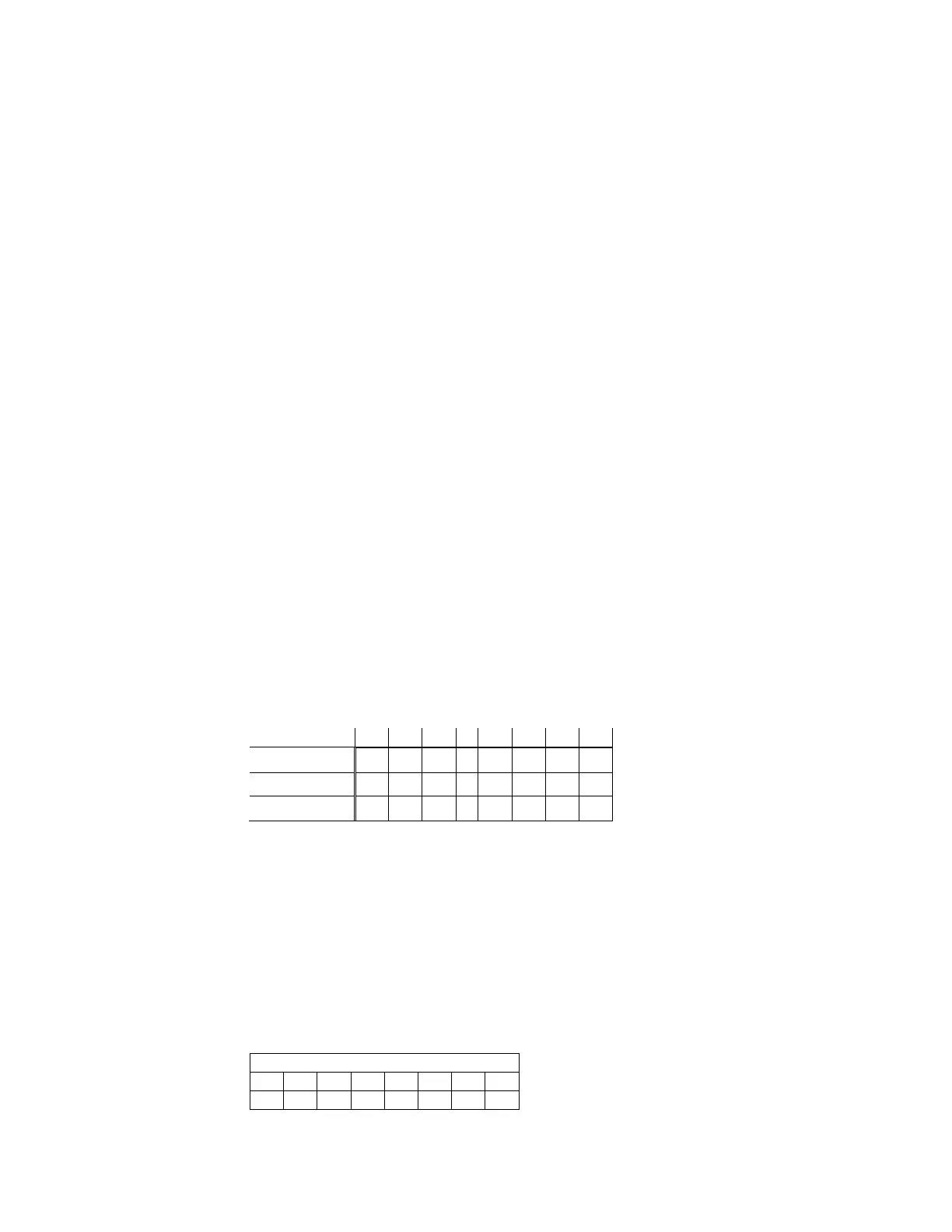7197 Series II Owner’s Guide Chapter 6: Commands
August 2011
149
Baseline State Request
This request tells the printer to send an Unsolicited Status Update message for all Sensors and States
supported by the firmware. This allows the Application, Driver, or Control to establish an initial
picture of the state of the printer.
ASCII:
GS DC1 n
Hexadecimal:
1D 11 FF n
Decimal:
29 17 255 n
Value of n
0 or 1
Message To Printer (Hex): 1D 1E 1F – Causes the printer to fire off a series of USU messages to the
host to establish a baseline.
Unsolicited Messages
The following is the general message structure for the Unsolicited Status Update messages:
The Unsolicited Message will always consist of at least three bytes. The top 4 bits (7, 6, 5, 4) of
each byte will be an identifier that when compared to the bytes before and after it will identify the
byte as part of the three byte Unsolicited Status Update (USU) message. The remaining 4 bits (3, 2,
1, 0) will contain the information that is being passed to the host from the printer.
The lower 4 bits of the first two bytes when examined as continuous bits of a single number identify
the sensor or state for which USU message is reporting a change. The lower 4 bits of the last byte
will identify the state that is being reported to the host.
BIT
7 6 5 4 3 2 1 0
Byte ( 1 ) 1 0 0 1 x x x x
Byte ( 2 ) 1 0 1 0 y y y y
Byte ( 3 ) 1 0 1 1 z z z z
The host can determine if any unsolicited 3-byte sequence from the printer is a USU message by
checking the upper 4 bits of the three bytes received. If the upper 4 bits match those of the USU
message, then the remaining lower 4 bits are to be interpreted as the information bits of a USU
message.
The information bits of a USU message are to be interpreted as follows:
The lower 4 bits of Byte (1) and Byte (2) should be combined in the following manner to constitute
an identifier value in the range of 0-255. This identifier then determines how the host should
interpret the state value of the lower 4 bits of Byte (3).
Combined Bits from Byte (1) and Byte (2) in high bit to low bit order:
Identifier Value by Bit Definition
7 6 5 4 3 2 1 0
x x x x y y y y

